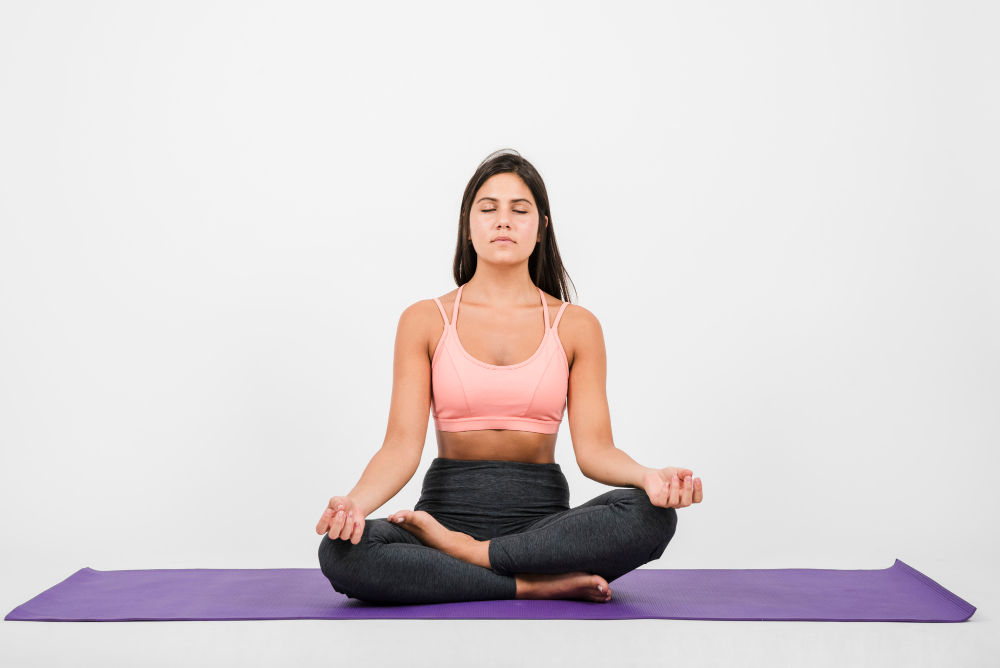Thank you for reading this post, don't forget to subscribe!
Meditation, often associated with inner peace and mindfulness, has garnered attention for its remarkable ability to soothe the restless mind and promote restorative sleep. Beyond its spiritual and mental benefits, meditation has proven itself as a potent tool for those who yearn for better sleep. 1. Mindfulness meditation
At its core, mindfulness is the art of being fully present in the moment, free from distractions and judgments. This practice invites you to cultivate awareness of your thoughts, emotions, and physical sensations as they unfold in real time. Now, let’s explore how to incorporate mindfulness meditation into your nightly routine.
Finding a comfortable posture
To begin, find a comfortable seated or lying-down posture. You can sit in a chair, on a cushion, or lie on your back, whichever feels most natural to you. The key is to find a position that supports relaxation and allows you to maintain alertness. Observing sensations
As you settle into your chosen posture, turn your attention to your breath. Observe the sensation of each inhalation and exhalation. Notice the rise and fall of your chest or the expansion and contraction of your abdomen. There’s no need to control your breath; simply observe it as it naturally occurs. Dealing with distractions
During your meditation, you may encounter distractions. Your mind might wander, or external noises may disrupt your focus. When this happens, acknowledge the distraction without judgment and gently guide your attention back to your breath. Each time you do this, you strengthen your capacity for mindfulness.
2. Progressive muscle relaxation
Progressive Muscle Relaxation (PMR) is a therapeutic technique that can lead you on a journey of profound relaxation, making it an effective tool for achieving restful sleep.
Let’s delve into the principles of PMR and provide you with step-by-step instructions to help you master this technique for a peaceful night’s rest.
Body scanning
Begin by finding a quiet and comfortable place to sit or lie down. Close your eyes and take a few deep breaths to center yourself [2]. Then, systematically work your way through your body, starting from your toes and moving upward. As you focus on each muscle group, tense it for about five seconds, and then release. Benefits for sleep
By the time you complete your PMR session, you will have effectively released physical tension from head to toe. This process not only relaxes your muscles but also calms your mind, setting the stage for restful sleep.
With regular practice, you can enhance your ability to let go of stress and worries, paving the way for a night of restorative slumber.
3. Yoga nidra
Yoga Nidra, often referred to as “yogic sleep,” is a guided meditation practice that invites you to embark on a voyage of deep relaxation and self-discovery. Let us explore the essence of Yoga Nidra and provide you with a step-by-step approach to experience this transformative technique for enhanced sleep quality.
Body awareness
Begin by finding a comfortable place to lie down. Close your eyes and take a few deep breaths to settle into your body. Your guide will lead you through a body awareness exercise, where you’ll focus on different parts of your body and gradually release tension.
Visualization
Yoga Nidra often incorporates guided visualizations. Your guide may invite you to imagine serene landscapes, engage in healing journeys, or explore the depths of your subconscious mind. These visualizations are designed to evoke profound relaxation and a sense of inner peace.
Deep relaxation
As you progress through the practice, you’ll reach a state of deep relaxation that mimics the restorative qualities of sleep. This deep relaxation not only calms your mind but also readies your body for a rejuvenating night’s rest.
4. Guided imagery
Guided imagery is a meditation technique that taps into the creative power of your mind. By immersing yourself in vivid, calming scenarios, you can soothe your mind, reduce anxiety, and prepare for restful sleep.
In this guide, we will explore the art of guided imagery and provide you with the tools to craft your mental sanctuary for better sleep.
Choosing a guided script
Begin by selecting a guided imagery script or recording. These scripts are often available in books, audio recordings, or online resources.
You can choose a scenario that resonates with you—be it a calming walk through a forest, a serene journey by the ocean, or any other scenario that brings you peace.
Self-guided vs. recorded
You can engage in guided imagery in two ways: self-guided or with the assistance of a recorded guide. In self-guided sessions, you create the imagery in your mind, while recorded sessions are led by a meditation guide who provides prompts and descriptions.
5. Breathwork for sleep
Breathwork for sleep introduces you to various breathing techniques designed to calm the mind and prepare the body for rest [3], [4].
Explore the profound influence of breath on sleep with step-by-step instructions below for practicing breathwork to improve your sleep quality.
The 4-7-8 technique
Begin by sitting or lying down in a comfortable position.
Close your eyes and take a deep breath in through your nose, counting to four.
Hold your breath for a count of seven.
Exhale completely through your mouth for a count of eight.
Repeat this cycle for several minutes, focusing on the rhythm of your breath.
Box breathing
Sit or lie down comfortably and close your eyes.
Inhale through your nose for a count of four.
Hold your breath for a count of four.
Exhale through your mouth for a count of four.
Pause for a count of four before beginning the next breath cycle.
Continue this pattern, creating a “box” with your breath.



